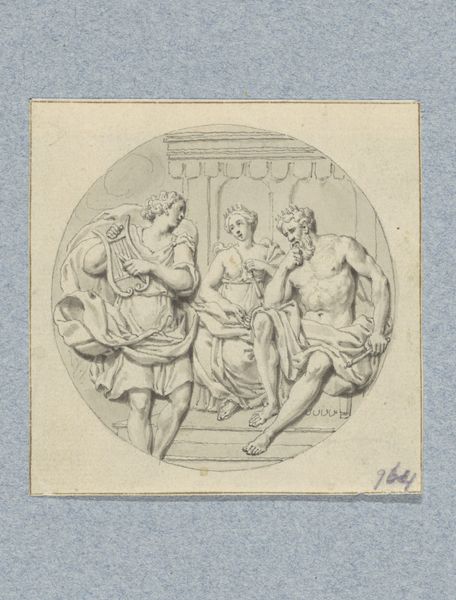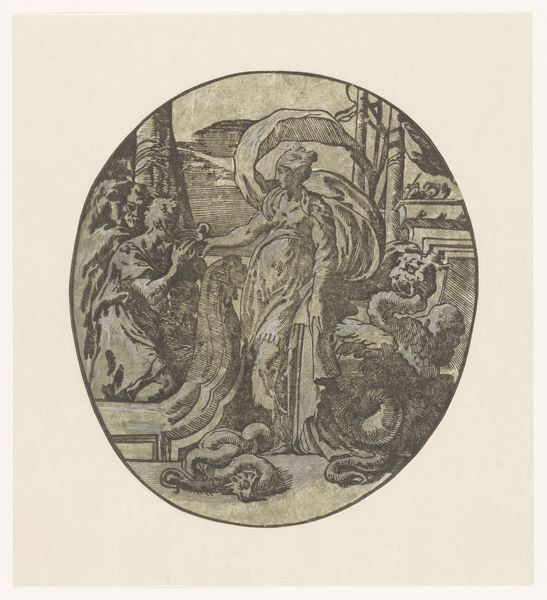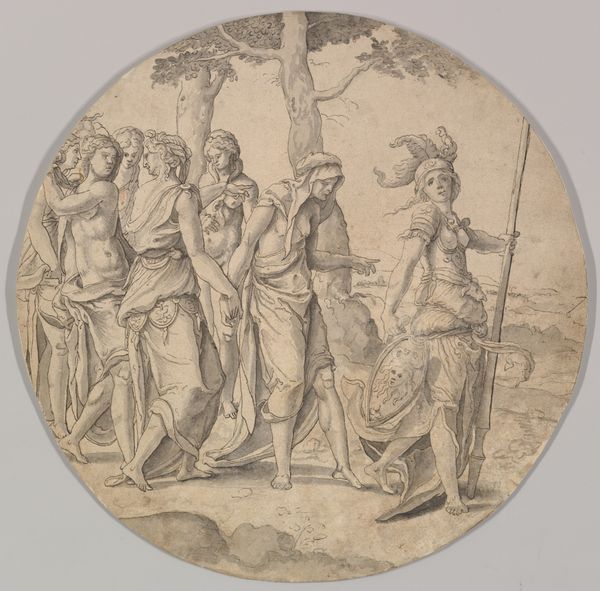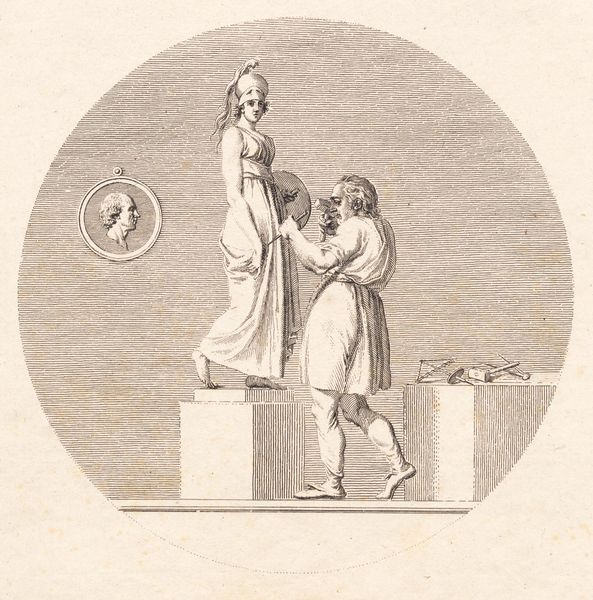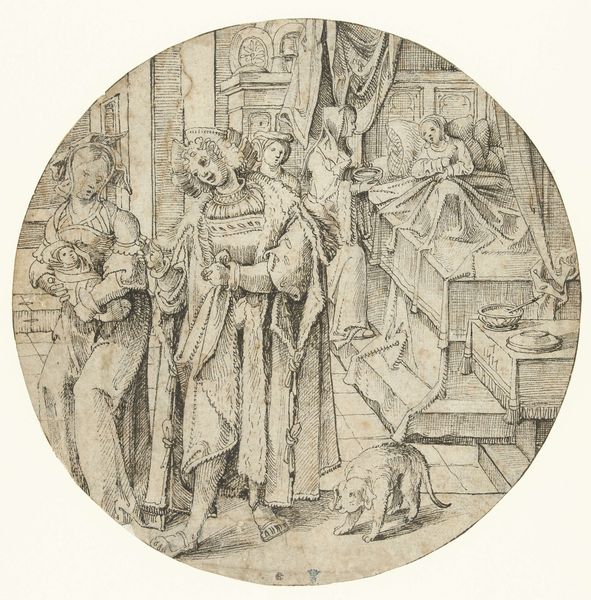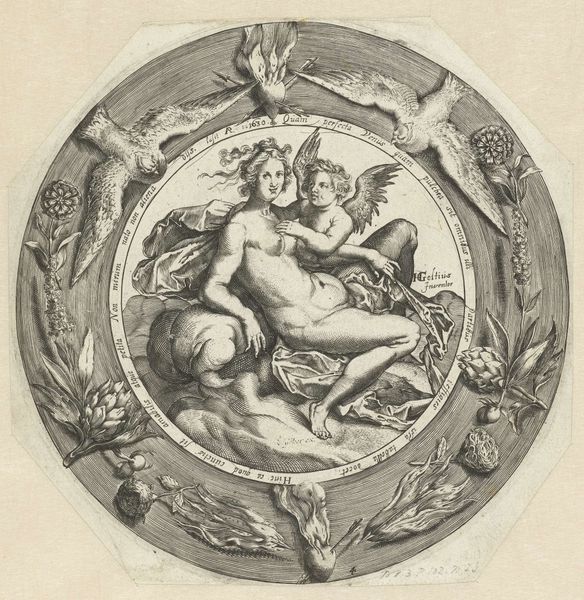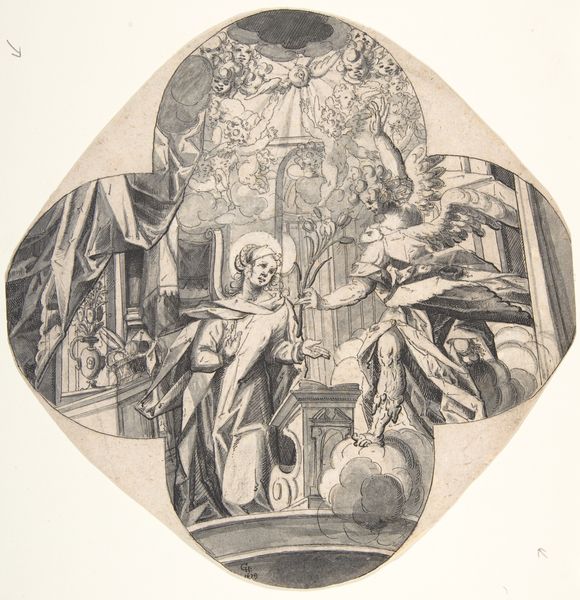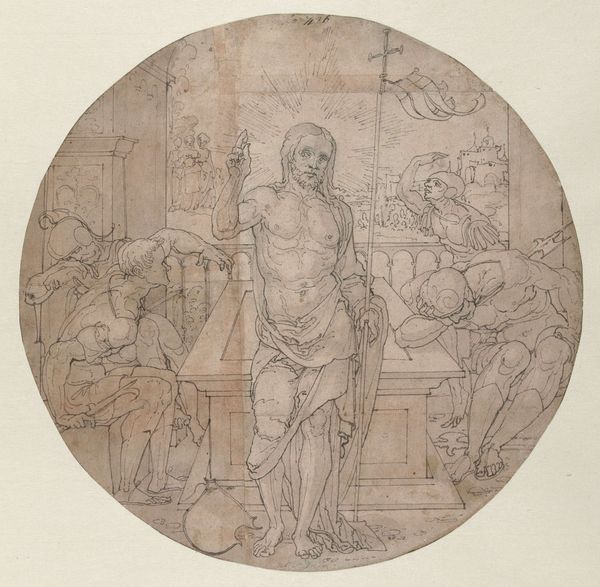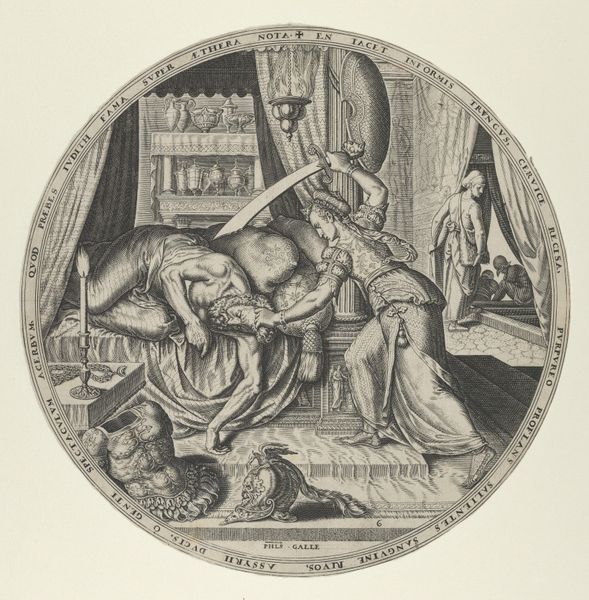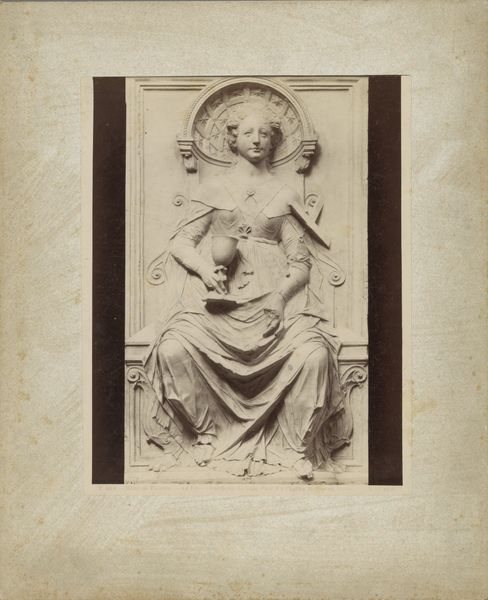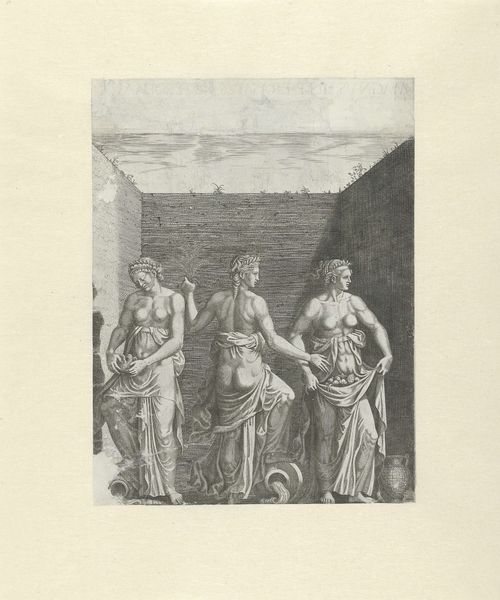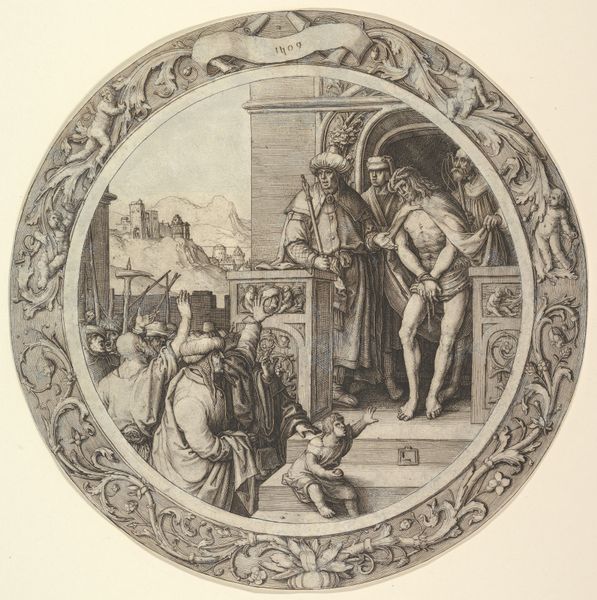
drawing, print, engraving, architecture
#
drawing
# print
#
form
#
11_renaissance
#
line
#
italian-renaissance
#
engraving
#
architecture
Dimensions: Sheet (round): 13 1/8 x 13 1/8 in. (33.3 x 33.3 cm)
Copyright: Public Domain
Curator: What strikes me immediately about this drawing is its almost hauntingly elegant precision. The fine lines, the delicate shading, the slightly macabre figures... Editor: Yes! Before us we have “Two Terms, Two Cornices and a Pillar,” an engraving crafted in 1554 by Hugues Sambin. At its heart, it grapples with ideas of structure, ornamentation, and their inherent power. Curator: Power indeed. Just look at the figures – the term on the left is practically overflowing with cherubs and a Bacchus-like figure wreathed in grapes. There is such raw exuberance—until you note his slightly downturned expression. What is that shadow he carries? Editor: I read his shadow as a testament to the period, the Italian Renaissance. We see echoes of ancient Roman ideals re-emerging alongside religious themes, a sort of visual power struggle played out through form and imagery. The symmetry feels deliberate. Curator: It's like he's daring us to choose a side. Look at the other term – those embracing female figures. Are they sorrowful or affectionate? I want to call it sensual but hesitate. Editor: The ambiguity you feel might be its most powerful quality. Hugues, after all, designed this less than 40 years after the Diet of Worms and start of the Reformation, where anxieties and schisms about womanhood were emerging from many social corners. Curator: Absolutely, it's all there in the details—the subtle unease. This pillar becomes, perhaps unintentionally, a mirror reflecting not just the classical forms it imitates, but the tremors in the era's cultural foundation. It is the tension of an identity trying to pull free. Editor: Beautifully put. It is tempting to reduce the work to ornamentation when really it’s architecture imbued with symbolic potency and cultural tension. It stands as a testament to the enduring capacity of art to reflect—and often, unknowingly, confront—societal norms. Curator: Well, it definitely succeeded in starting us down a twisting, delightful path. A testament to the power of old lines creating fresh thoughts. Editor: I think so, too. We’ve begun to decode its complexities—there is probably far more here, hidden behind line and shade.
Comments
No comments
Be the first to comment and join the conversation on the ultimate creative platform.
